As business data keeps getting trickier, we need smarter ways to make sense of it. Old-school data tricks used a lot of hands-on work and couldn’t handle big calculations well. But now, we’ve got a new game with AI tools. These cool tools use smart algorithms to find important stuff, do the boring tasks for us, and dig out secrets hidden in huge piles of data.
Thanks to AI, data analysts can now crack tough problems quicker and with fewer mistakes, giving data analysis a serious upgrade. In this piece, we’re checking out the top 12 AI tools for data analysis in 2024.
What is Data Analysis?
AI data analysis is like using smart computer tools (i.e. AI tools) to understand and get useful insights from big and complicated sets of data. It uses tech like machine learning and deep learning to figure things out, find patterns, and make predictions. This helps businesses get important info from lots of data faster and better.
With AI skills like understanding language, recognizing pictures, and spotting unusual things, companies can really dive into their data, make smart choices, and find hidden chances to grow and do better.
How to Work with AI for Data Analysis?
By going through these steps, data analysts can use AI tools to get important insights, make smart choices, and push for innovation and growth:
Set Goals
Make it clear what you want from your data project. Figure out exactly what you want to learn or get from using AI for your analysis.
Getting the Right Data Ready
Get the info you need from different places and make sure it’s tidy and ready for study. Sometimes, you gotta clean it up, change things around, and make sure it’s all set for analysis.
Pick the Right AI Moves
Figure out which AI tricks fit your goals. Think about using smart learning, deep thinking models, talking tech, or seeing things like a computer. Choose based on what your data needs and what kind of analysis you’re doing.
Teaching Your AI and Checking How It’s Doing
Train your AI with data that’s got labels or comes from the past. Check how well it’s doing with the right measuring tools, and if needed, go back and train it some more.
Finding Important Stuff in Data
Dig out the important things from the data or make new ones to make the model work better. This might mean making the data simpler, adjusting the size of things, or inventing fresh details.
Putting AI to Work
Get your AI models out into the real world where they can check out fresh data. Make sure these brainy models smoothly fit into your setup and work with your current systems.
Understand and Confirm Results
Look at what the AI models are saying and figure out what it means. Double-check the findings using what you already know about the field. Run some tests or checks to be sure everything is accurate and reliable.
Share and Show What You Find
Explain your discoveries in a way that makes sense. Use pictures like charts and graphs to make complicated stuff easy to understand. It helps others get what you’re saying without any confusion.
Keep Getting Better
Keep an eye on your AI models, making sure they’re up to date with the latest data and what your business needs. Listen to feedback from users and the folks involved to make your analysis process even better.
Think about doing things right
When you’re dealing with data or AI, remember to be ethical. Check for any biases in the data or AI models. Make sure you handle and analyze data in a way that’s private, fair, and clear.
How AI Changes Data Analysis
Artificial intelligence (AI) is shaking up how we deal with data. Forget about the old manual ways; AI makes it faster. It gives quick insights and can predict things in real time. AI algorithms act like detectives, sorting through loads of data to find patterns and oddities.
Doing this by hand? Tough. But AI does it really well every time. With machine learning and deep learning, AI data analytics keeps getting better by learning from new data. It’s like having a brain that’s always updating, so we always get the newest insights.
Top 12 AI Data Analysis Tools
Check out these AI tools for crunching data and getting smarter insights for your projects:
- RapidMiner
- Tableau
- Qlik
- Microsoft Azure Machine Learning
- KNIME
- Power BI
- Google Cloud AutoML
- PyTorch
- DataRobot
- Talend
- H2O.ai
- IBM Watson Analytics
RapidMiner
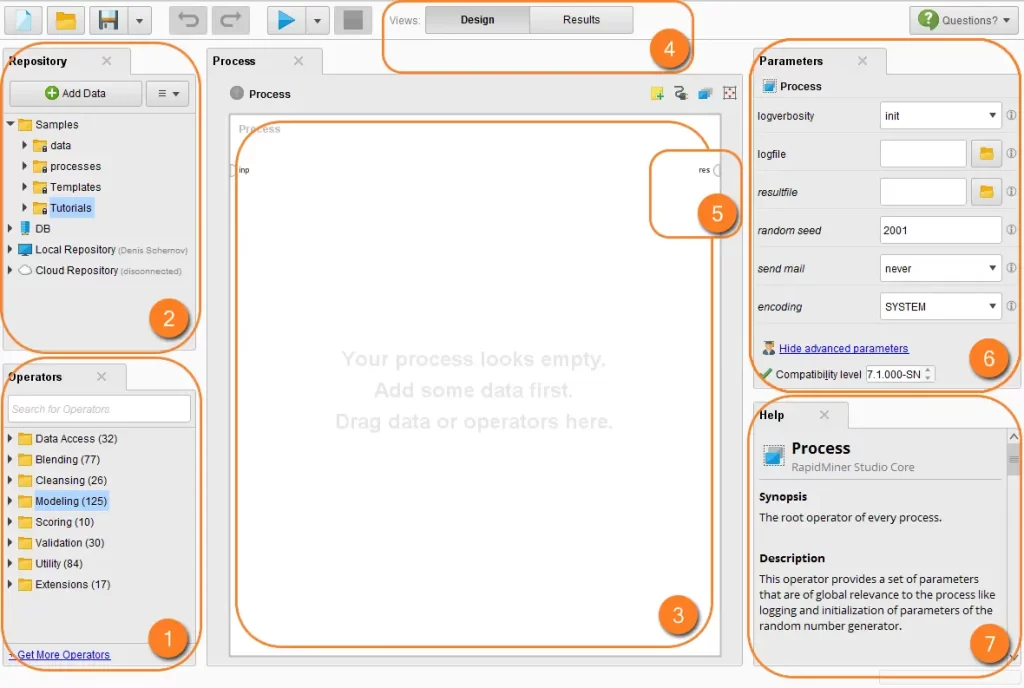
Rapidminer is user-friendly. You can drag and drop to analyze data, and it works for people with different skills. It helps data teams throughout the analytics process. RapidMiner has features for integrating and using machine learning, making it easy for businesses to get, load, and analyze data. It’s versatile—analyze text, photos, and audio files with RapidMiner.
Cost: It’s free, but there are some limits on what you can do.
Tableau
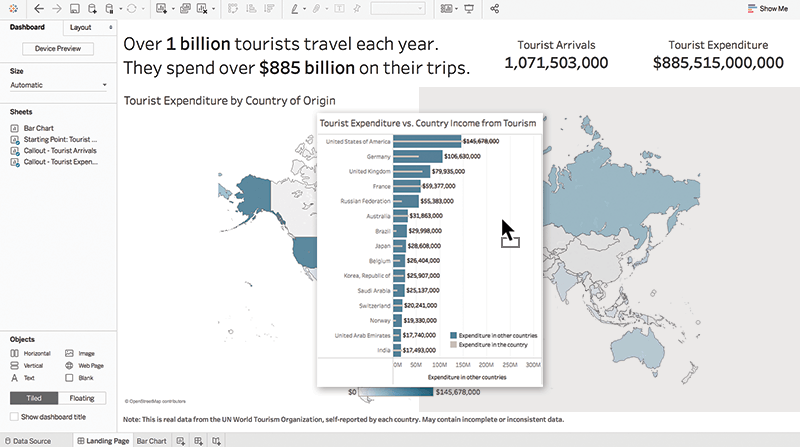
Tableau makes playing with data and showing it in pictures super easy. They’ve got this cool feature called Ask Data that’s like a smart assistant. You ask a question in regular words, and it shows you a nice picture answer. No need to be a coding whiz to make sense of your data.
Cost: Starts at $12 a month.
Qlik
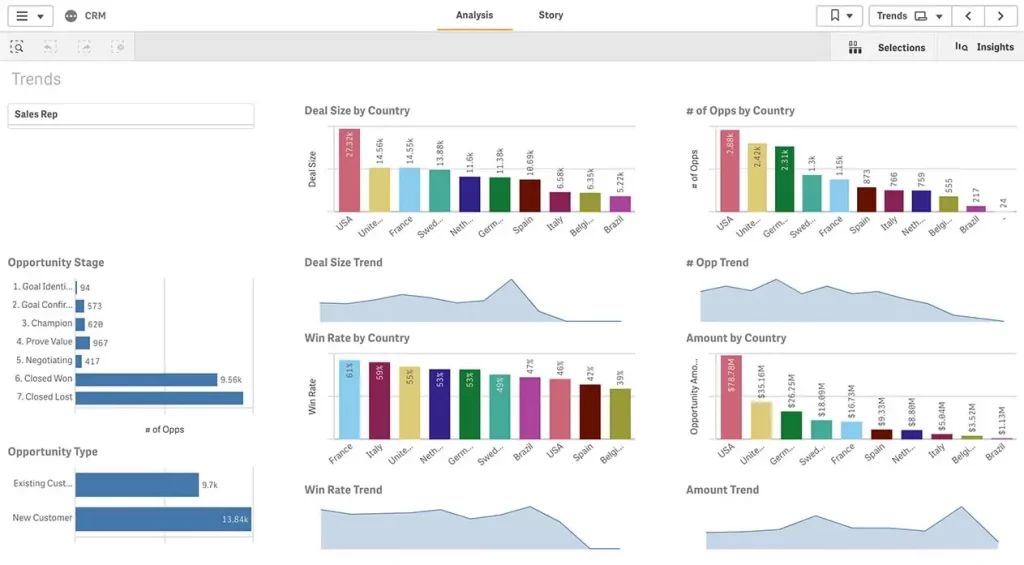
Qlik is a tool that makes playing with data easy. Whether you’re a beginner or a data pro, you can drag and drop to analyze data without any headaches. It helps out data teams from the beginning to the end, doing cool things like putting data together and even trying its hand at machine learning.
It is famous for how it deals with all kinds of data, even stuff like text, photos, and audio. It’s made to be easy for anyone, so businesses looking for a smooth way to analyze data find it really useful.
Cost: Qlik offers a free version, but has certain limits.
Microsoft Azure Machine Learning

This tool for looking at data with AI is on the cloud, and it can handle all sorts of data jobs, no matter how tricky. It’s made to help folks who are into data and machine learning use their skills. You can connect it with other Azure services to make fancy AI solutions for your business needs.
Cost: You get some stuff for free, but if you want all the cool features, it’s $9.99 each month.
KNIME

KNIME is a free tool that has everything you need to analyze data – planning, organizing, and making it into pictures. It’s like a super toolbox for data jobs. With KNIME, you get lots of smart tools, like AI stuff for predictions, machine learning, making data neat (ETL), and automating spreadsheets.
As for the cost, you can try it for free. If you want more features, just get in touch for the details.
Power BI
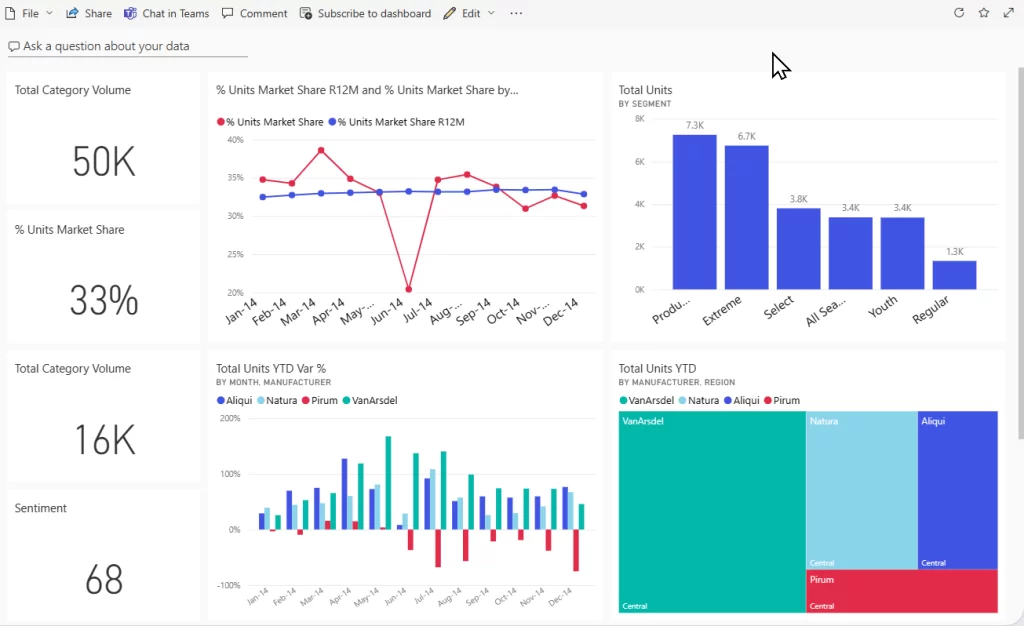
Microsoft’s Power BI, a tool for business smarts, makes digging into data and showing it off super easy. No fancy coding is needed—just a user-friendly setup. One cool thing is the “Ask Data” feature; it’s like a smart helper turning simple questions into cool data pictures.
Cost: Power BI starts at $12 a month.
Google Cloud AutoML

Google Cloud AutoML has a bunch of parts that make it easy to create machine learning (ML) models. You don’t need to be a coding god – it’s made for everyone. This tool is handy for businesses wanting to try different ML methods and models to find what works best for them.
Cost: They offer a free trial.
PyTorch
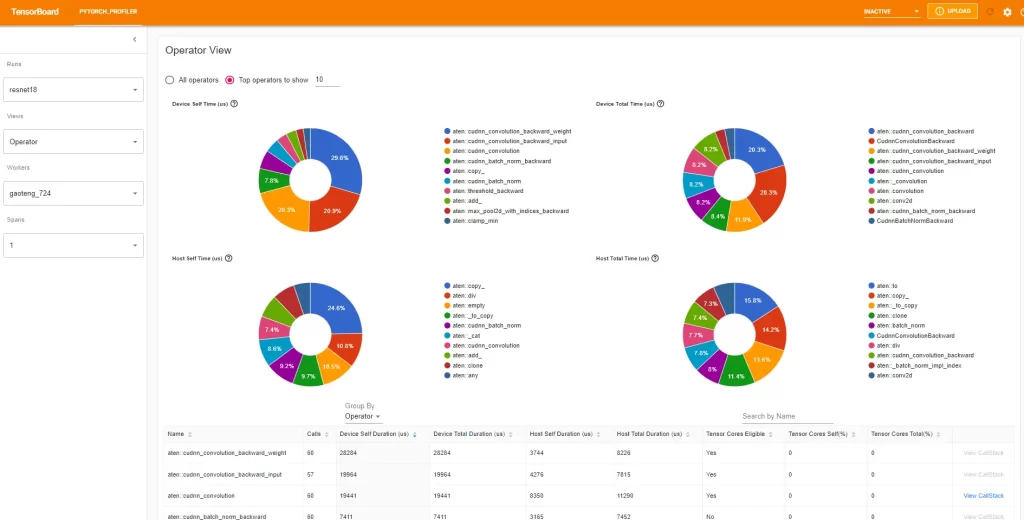
PyTorch is like a one-stop-shop for making smart computer programs, especially the ones that understand language or recognize pictures. It’s super handy for things like teaching computers to see and helping them learn from mistakes. Big companies that provide cloud services really like using it.
Cost: It kicks off at just $0.07.
DataRobot
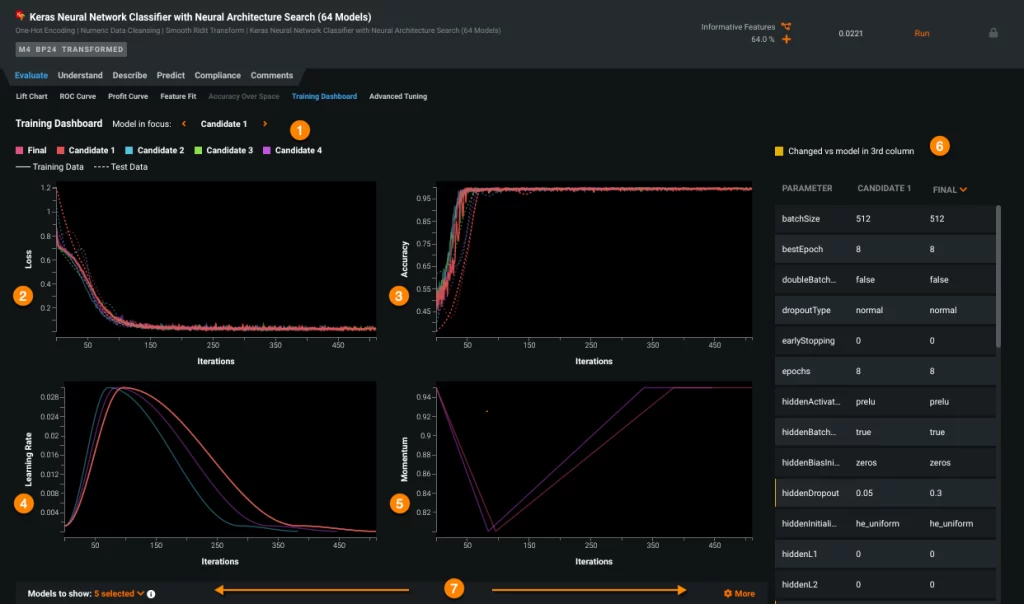
DataRobot speeds up making models with smart tech that works on its own – no need for you to get involved. It helps businesses work on different clouds, data centers, or wherever they need while looking after and keeping their business safe. The tool’s smart AI algorithms help make decisions based on data and give really accurate predictions.
Cost: You can give it a try for free.
Talend
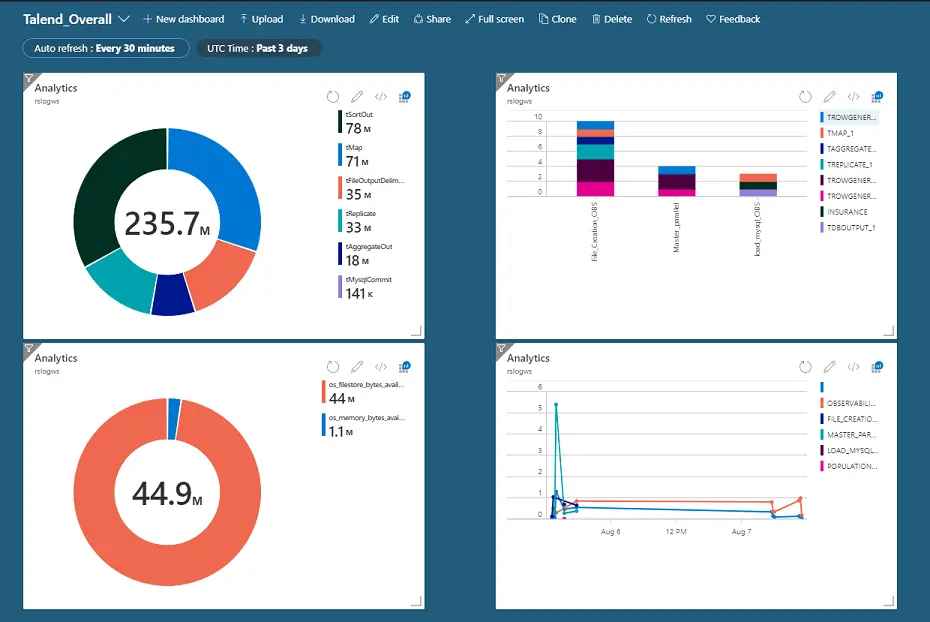
Talend is an all-in-one tool for dealing with data – putting it together, keeping an eye on it, and organizing it. You can use it for any kind of data or how it’s set up. With Talend, you can handle and check data on big data platforms like Hadoop, Spark, or Hive. It’s reliable for keeping things safe and following the rules while also helping you get accurate info and better predictions.
Cost: It comes with a free demo.
H2O.ai

H2O.ai is a free tool that helps you make and use ML models. It’s open to anyone and lets you design and use these models without needing to be a big-shot data expert. With H2O.ai, looking into huge sets of data is quick and smooth because it can handle a lot at once.
Cost: No charge!
IBM Watson Analytics
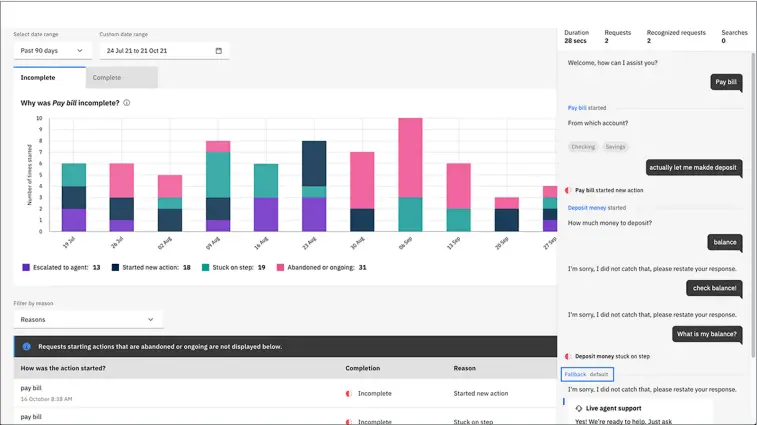
IBM Watson Analytics is an online tool that helps business folks mine and predict data without the tech fuss. It digs into your data, finds connections, and spots trends using smart insights. Thanks to AI magic, it helps you make decisions based on what the data says.
Cost: Free trial.
Frequently Asked Questions
Q1. What is the best AI to Analyze data?
If you’re into data, check out tools like Tableau, Power BI, Monkey Learn, and Akkio.
Q2. Is there an AI tool for data analysis?
Absolutely! There are cool tools like RapidMiner, Tableau, Google Cloud AutoML, PyTorch, DataRobot, Talend, H2O.ai, and IBM Watson Analytics.
Q3. Which AI is great for digging into Excel data?
For Excel lovers, Lumelixr AI, Zoho Sheets, Sheet AI, and Numerous AI are worth a look.
Conclusion
I hope you found my article about AI tools for data analysis useful. If yes?, then why not share what you think in the comments below.
These helpful tools, using smart tech like machine learning and deep learning, make it easier to deal with big and complicated datasets. They help us understand and get important info. AI in data analysis does a bunch of good stuff — it makes things work better, gets things right more often, and can handle a lot of info at once.
As tech gets even better, using these AI tools will become super important for businesses to keep up and make the most out of their data.




